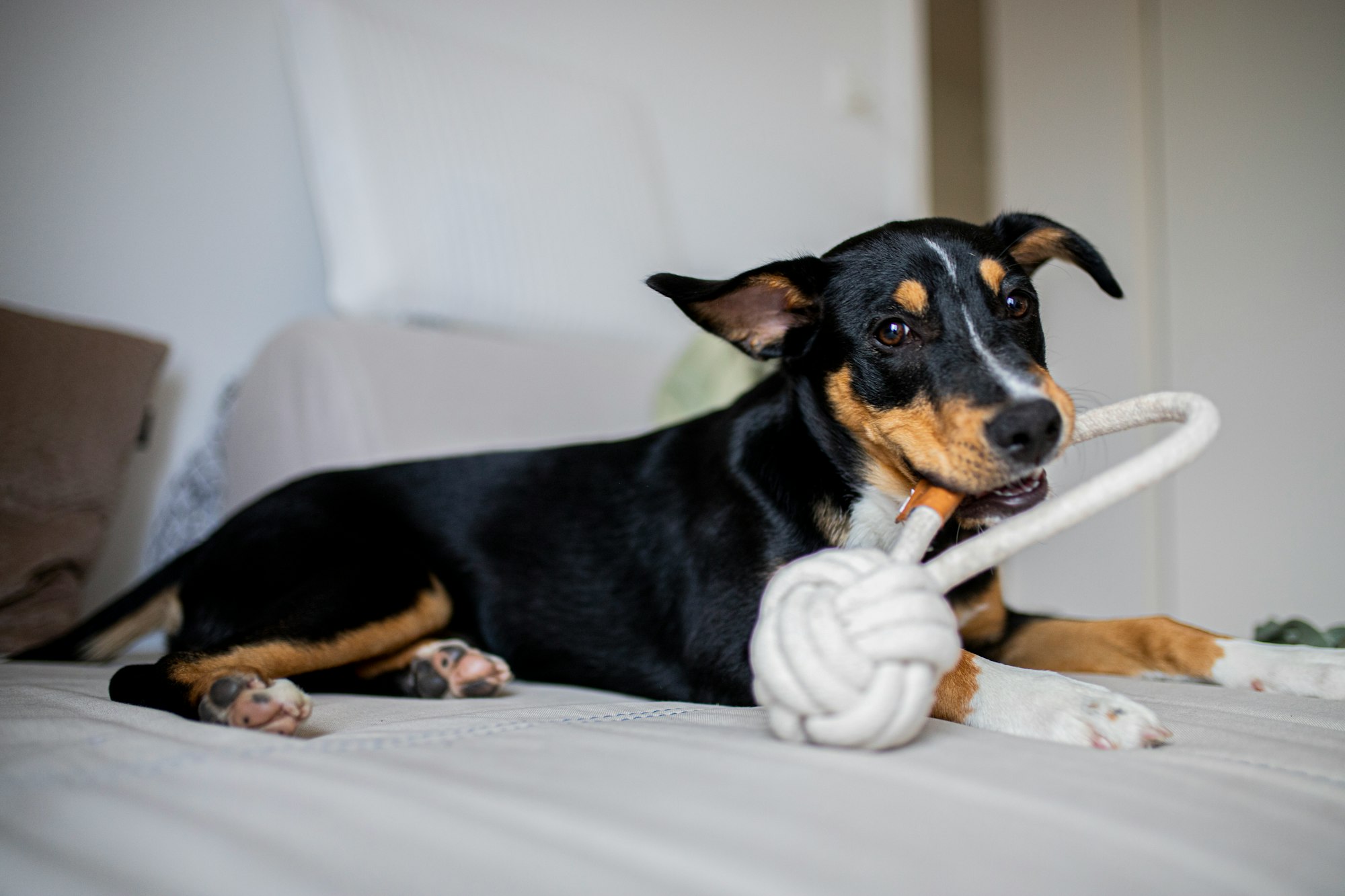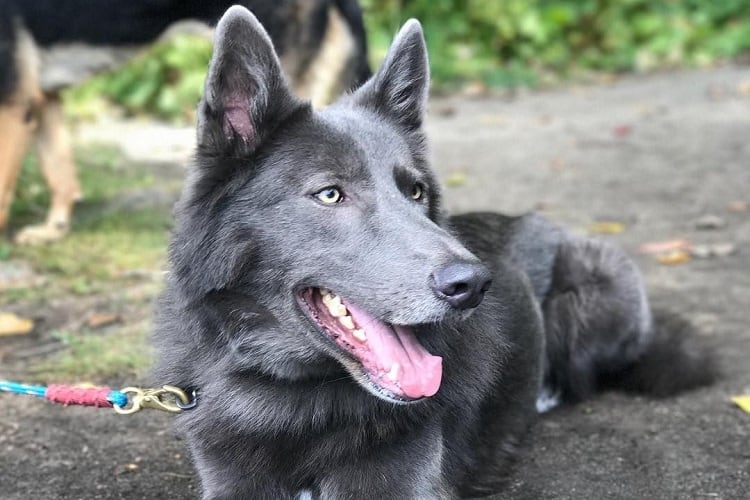Have you ever noticed how dogs come in all kinds of colors and coat patterns? From solid black to spotted or brindle, these coat variations are more than just cosmetic. In fact, they can tell us a lot about a dog's breed, health, and personality. So, let's dive into the wonderful world of dog coat colors and patterns!
One of the coolest things about a dog's coat is the color. Dogs can have fur that comes in a rainbow of colors, from brown and black to gray and white. Not only that, but they can have unique markings like spots, patches, or stripes.
What determines a dog's coat color is the amount and distribution of pigment in their hair. And, of course, different dog breeds are more likely to have certain coat colors and patterns, based on their genetic history. By understanding the genetics behind dog coats, breeders can create pups with specific traits, and owners can appreciate the uniqueness of their dog's fur.
Let's Talk Spots and Patches
Piebald dogs are dogs that have a white coat with large patches or spots of another color. The size and location of the them can vary from dog to dog, and can sometimes give them a unique and distinctive appearance.
The white areas of a piebald dog's coat are caused by the piebald gene, which inhibits the production of pigment in certain areas of the coat. This causes the areas without pigment to appear white, while the areas with pigment appear as patches of color or spots.
The piebald pattern can occur in many different dog breeds, including the Dalmatian, English Setter, and Great Dane. The piebald pattern can occur in different variations, such as a mostly white coat with a few colored patches or a mostly colored coat with a few white patches.

Other Coloring Genes
Socks and White Tipped Tails
The Irish spotting gene, also known as the S locus or MITF gene, can create white markings on dogs' chests, feet, and tails. This gene is responsible for the white markings on many breeds, including the Boxer, Border Collie, and Jack Russell Terrier. Dogs with more copies of the Irish spotting gene will have more white markings on their coat.
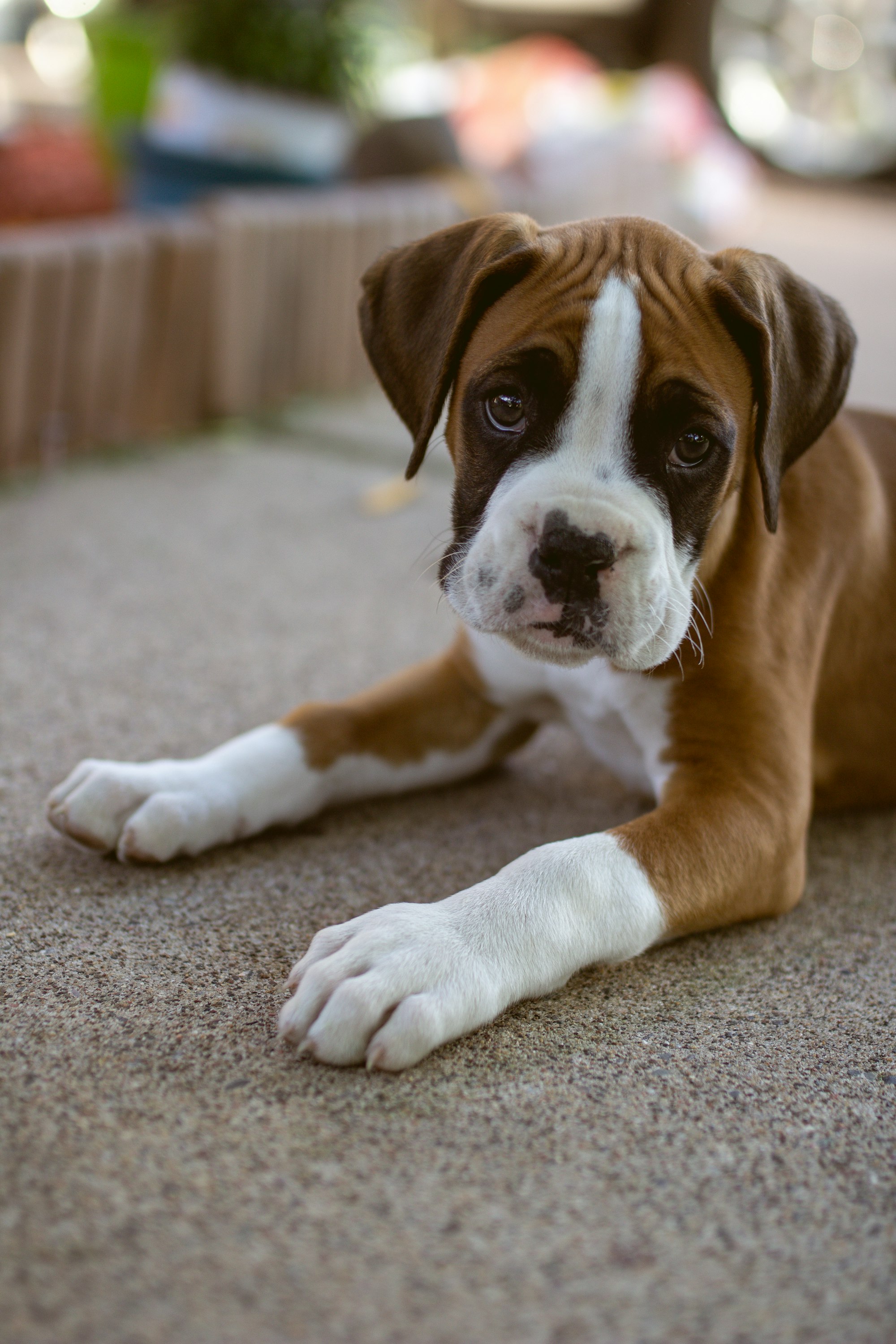
Multiple Colors
The parti-color gene, also known as the C locus or the MC1R gene, can create a wide range of white and colored patterns on dogs. This gene can produce coat patterns such as merle, and brindle. The parti-color gene is responsible for the coat patterns in many breeds, such as the Poodle, Pitbull and Australian Shepherd.

Flecks of Color
The ticking gene, also known as the T locus or the KIT gene, can create small white spots or flecks on dogs' coats. This gene is responsible for the ticking patterns on breeds such as the German Wirehaired Pointer and the Australian Cattle Dog. The amount of ticking on a dog's coat can vary depending on the individual dog and the expression of the gene.
The roan pattern is characterized by the growth of pigmented hairs in areas of white spotting, resulting in a blended appearance of pigmented and unpigmented hairs. This can give the coat a more evenly grizzled look compared to the spotted appearance of ticking. However, roaning can also be patchy and appear similar to very dense ticking.
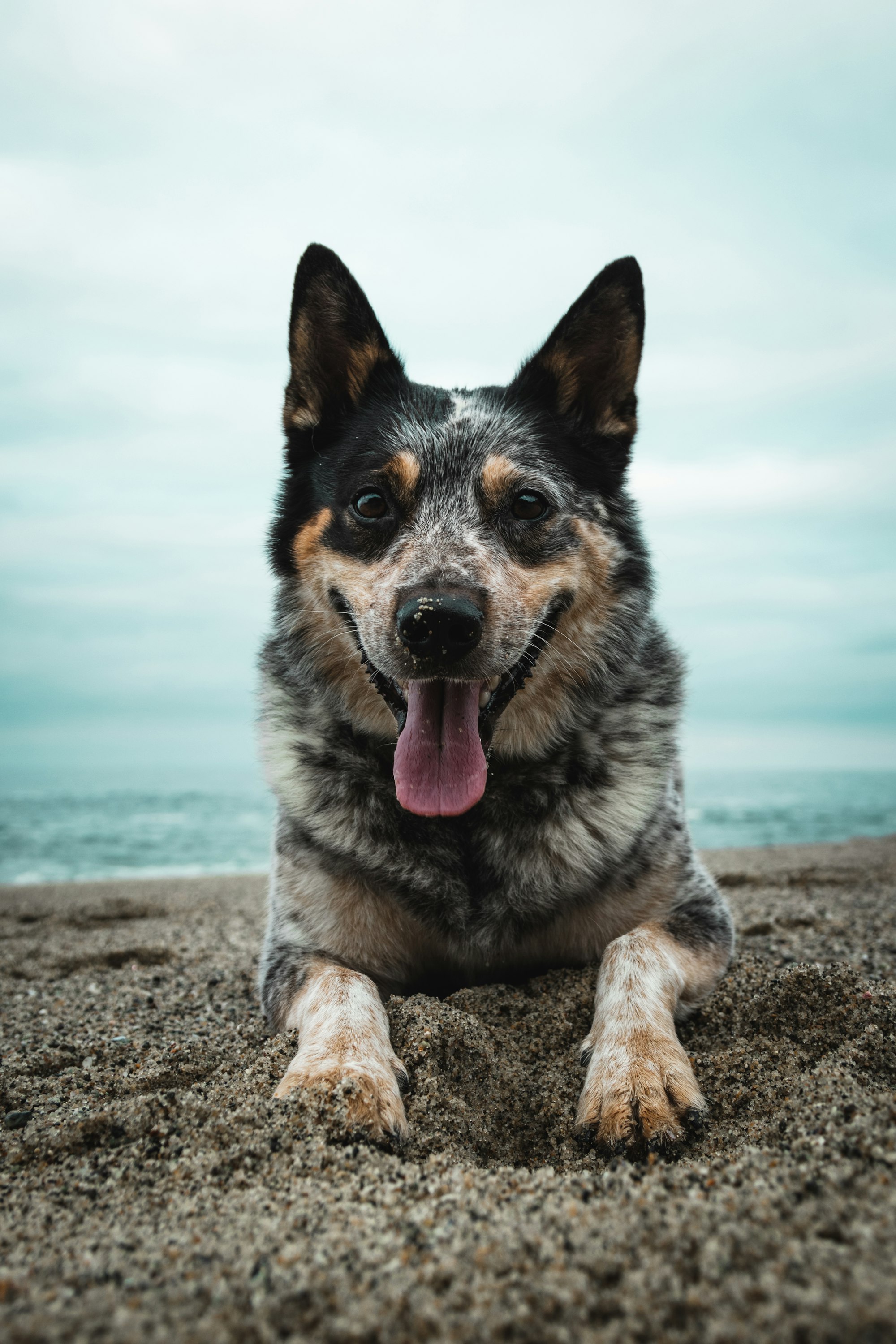
Wirehaired Breeds
Wirehaired dogs are a group of breeds that have a distinctive coat that is rough, bristly, and often wiry to the touch. The hair on a wirehaired dog is coarser and more pronounced than the hair on a smooth-coated or long-coated dog. Examples of wirehaired breeds include the Wirehaired Dachshund, the Wirehaired Pointing Griffon, and the Airedale Terrier.
The wiry hair of a wirehaired dog serves a functional purpose, as it provides protection from the elements and from rough terrain. The harsh texture of the coat helps protect the dog's skin from thorns, brambles, and other obstacles that they may encounter while hunting or working.
Wirehaired coats are formed by a combination of soft and harsh hairs. The harsh, wiry hairs are the outermost layer, while the softer undercoat provides warmth and insulation. The exact texture of the coat can vary from breed to breed, and even within a breed.
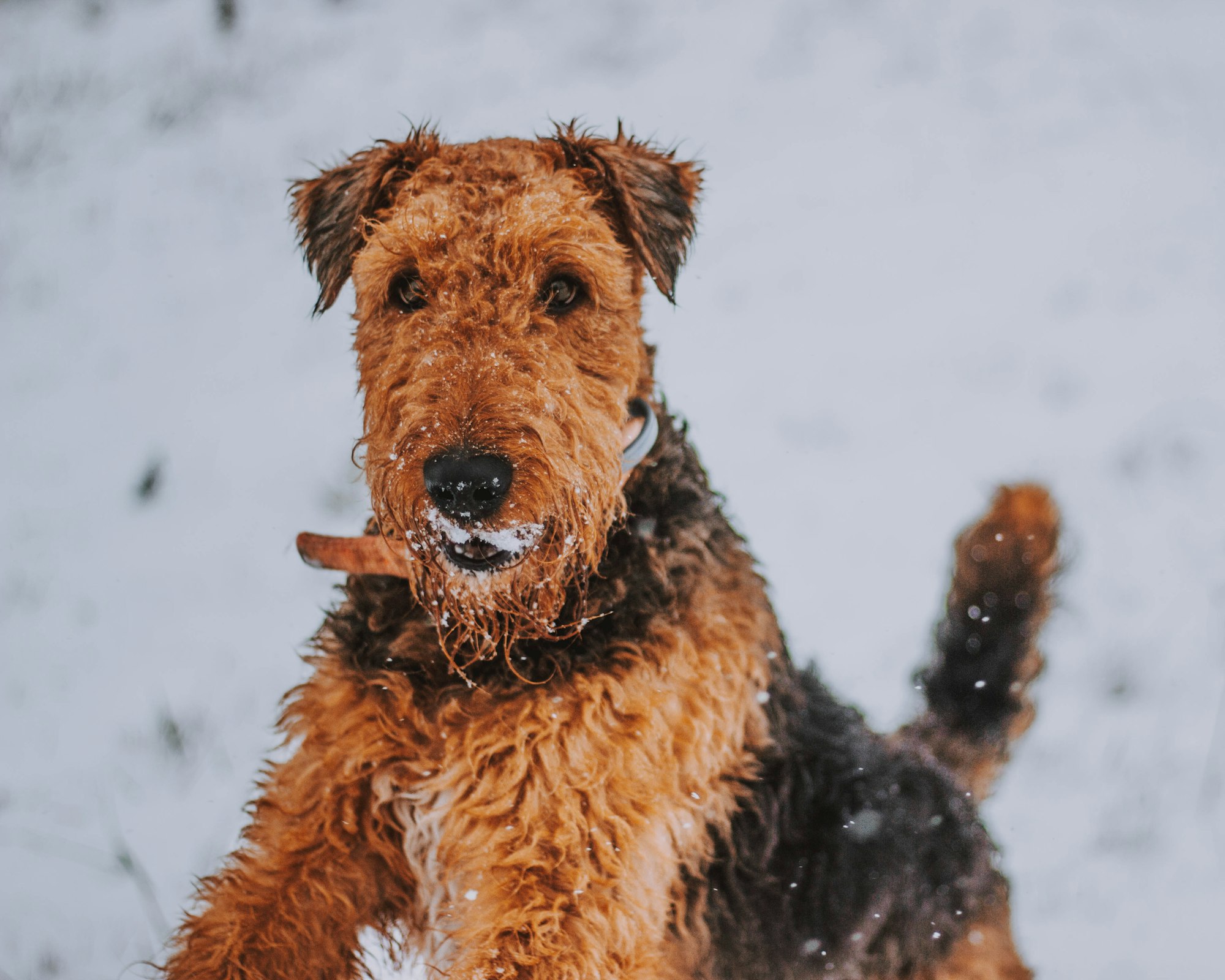
Rhodesian Ridgebacks
Rhodesian Ridgebacks have a distinctive "ridge" of hair down their back, which is caused by a unique genetic trait. The ridge is created by a strip of hair growing in the opposite direction from the rest of the coat. This ridge of hair is typically about two inches wide and runs from the shoulders to the hips.
The trait that causes the ridge is the result of a natural mutation that occurred in a population of dogs in southern Africa. The breed was originally developed by Boer farmers to hunt big game, and the ridge was believed to have served as a type of visual marker for hunters, making the dogs more visible in tall grass and brush.
While the ridge may have originally served a functional purpose, it has become an important and distinctive feature of the Rhodesian Ridgeback breed. The breed standard for Rhodesian Ridgebacks requires the presence of the ridge, and many breeders and owners consider it an important part of the breed's identity.

The Komondor
The Komondor is a large, muscular breed of dog that is known for its unique, corded coat. The cords, which resemble long, rope-like strands of hair, can reach up to 30 centimeters in length and are formed through a natural process called felting.
The Komondor's coat is made up of two types of hair: a soft, woolly undercoat and a coarser outer coat. In the Komondor, the outer coat grows in spiraled curls that gradually tangle and mat with the soft undercoat. Over time, these tangles and mats become more pronounced and form the cords that give the Komondor its distinctive appearance.
The Komondor's coat is a result of centuries of natural selection and selective breeding. The breed was developed in Hungary to protect flocks of sheep from predators, and its coat was bred to be long and corded to help it blend in with the flock and protect it from predators.

A Shar-Pei's Wrinkles
The Shar-Pei is a breed of dog that is known for its wrinkled skin, especially around the head, neck, and shoulders. The wrinkles on the Shar-Pei serve a functional purpose, as they were originally bred to be working dogs, primarily used for hunting and guarding.
The wrinkles on a Shar-Pei's face and body help to protect the dog from attacks by predators. If an animal tries to bite a Shar-Pei, the loose skin and wrinkles can make it more difficult for the predator to get a grip on the dog's body. Additionally, the wrinkles can help to deflect and absorb blows or bites, further protecting the dog.
In addition to their functional purpose, the wrinkles on a Shar-Pei have become an important part of the breed's identity. In fact, the breed standard for the Shar-Pei requires the presence of wrinkles and loose skin around the head, neck, and shoulders.
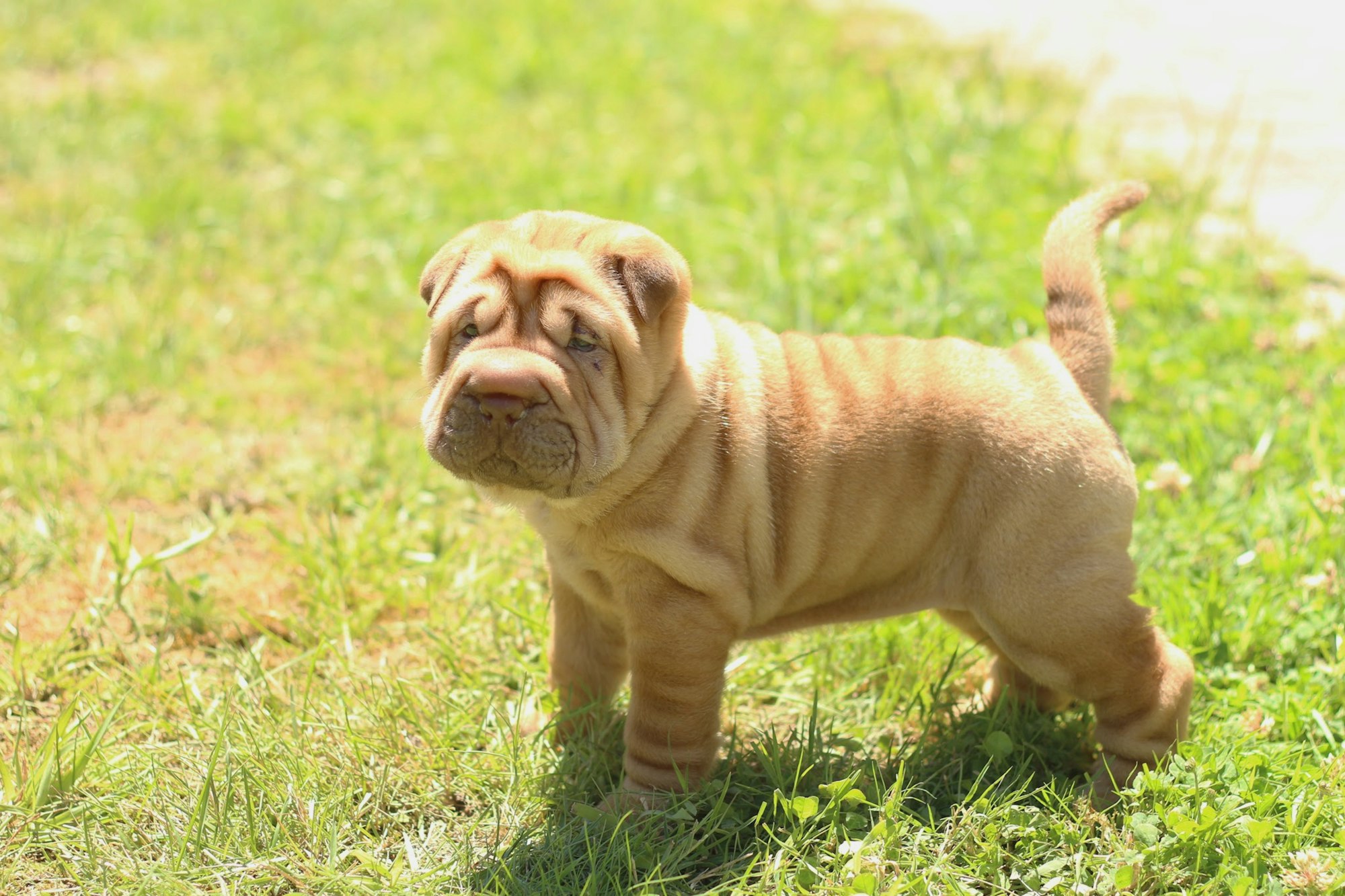
"But Wolves Don't Have Spots"
Dogs are indeed descended from wolves, and while they share many characteristics with their wild ancestors, they have undergone significant changes during their domestication process, including the development of different coat types and colors.
The evolution of dogs' coats can be attributed to a combination of natural selection and artificial selection. In their natural environment, wolves' coats would have provided insulation from the cold and protection from predators. However, as wolves began to associate with humans and eventually evolved into dogs, their coats would have served different purposes, such as providing camouflage, signaling aggression or submission, or attracting attention.
Through artificial selection, humans have selectively bred dogs to exhibit desired coat types and colors, as well as other physical and behavioral traits. Over time, this selective breeding has led to the wide variety of coat types and colors that we see in modern dog breeds today.
Furthermore, genetic mutations and variations have also played a role in the development of dogs' coats. These mutations can result in the loss or alteration of pigmentation, leading to coat colors and patterns that may not have existed in wolves.
Final Thoughts
The world of dog coat colors and patterns is a fascinating one, filled with a diverse range of styles, shapes, and textures. From piebald dogs with their unique spotted markings to wirehaired breeds with their coarse, bristly coats, there is no end to the variety of looks that dogs can possess.
By understanding the genetics behind these coat colors and patterns, we can appreciate the diversity of our furry companions and celebrate the unique traits that make them who they are.
Ultimately, the incredible array of colors and patterns found in dogs reminds us of the beauty and wonder of the natural world. Whether we are admiring the distinctive ridge of a Rhodesian Ridgeback, the unique cords of a Komondor, or the speckled coat of a roan dog, we can appreciate the rich tapestry of life that surrounds us.
So the next time you see a dog with a particularly striking coat, take a moment to appreciate the fascinating biology and genetics behind their unique look. After all, every dog is a one-of-a-kind masterpiece, with a story all their own.
